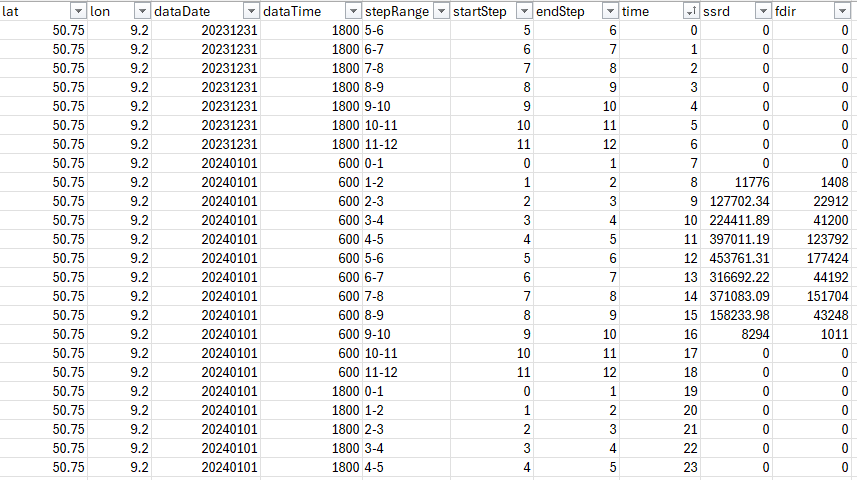Hello,
My goal is to convert the ERA5 ssrd and fdir values to instantaneous values in units of W m⁻². According to the documentation and the GRIB file, these values are described as accumulations. However, when I use the following formula:
ins_ssrd(t+1) = (acc_ssrd(t+1) - acc_ssrd(t)) / 3600
where “ins_ssrd” is the instantaneous value I’m trying to calculate, “acc_ssrd” is the accumulated value, and “t” is time, I get a range of values from approximately -369 to 453 for ssrd, and -585 to 467 for fdir. The negative values fall far outside the valid range for solar radiation.
Moreover, when I plot the raw data read from the GRIB file, the pattern doesn’t resemble an accumulation that would either increase or remain constant over time before resetting. Instead, it appears more like instantaneous values, with high radiation during midday and lower values in the morning and evening.
Could I be missing a step in the process, or is it possible that “ssrd” and “fdir” are actually already provided as instantaneous values?
To help clarify my question, I have attached a plot of the raw values read from the GRIB file over a single day as well as the data, before any conversion.
Best regards,
Hoa Nguyen

